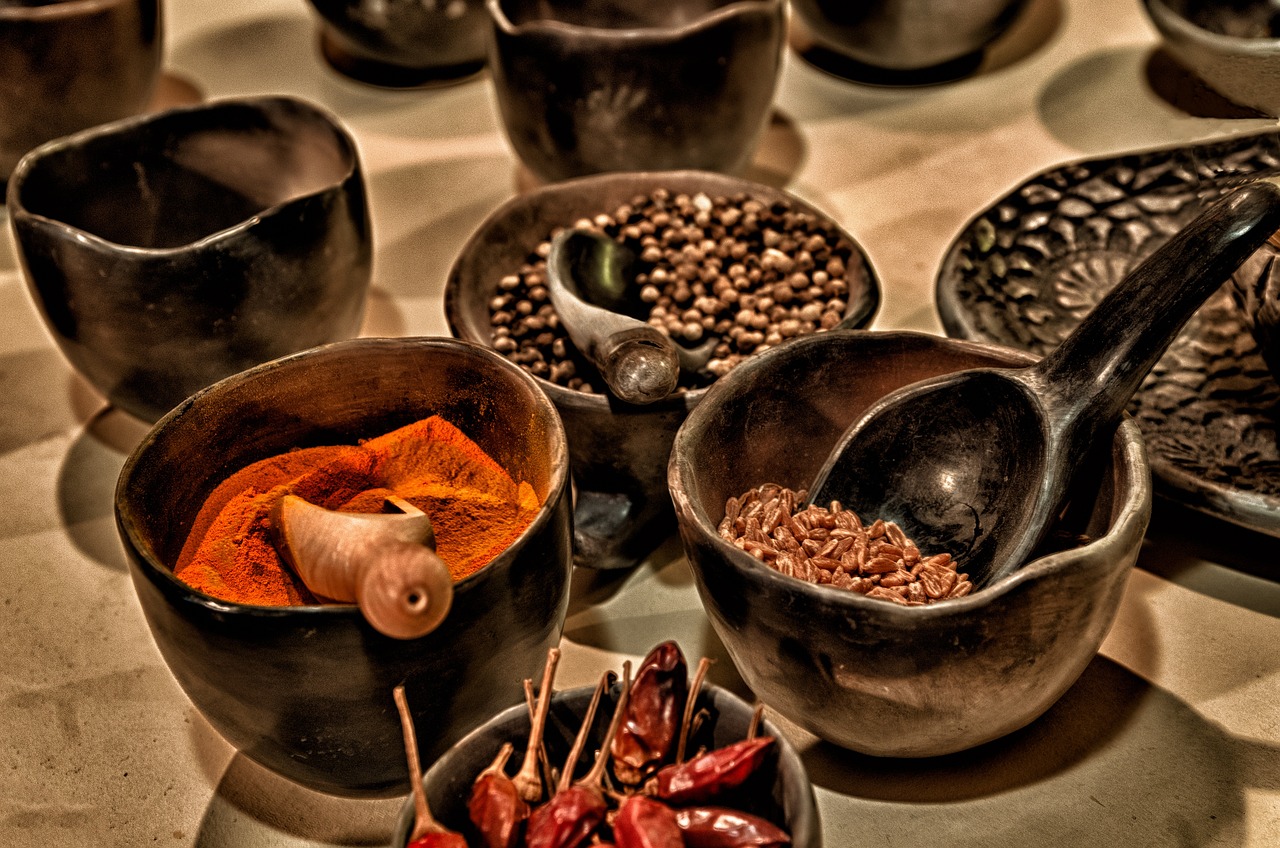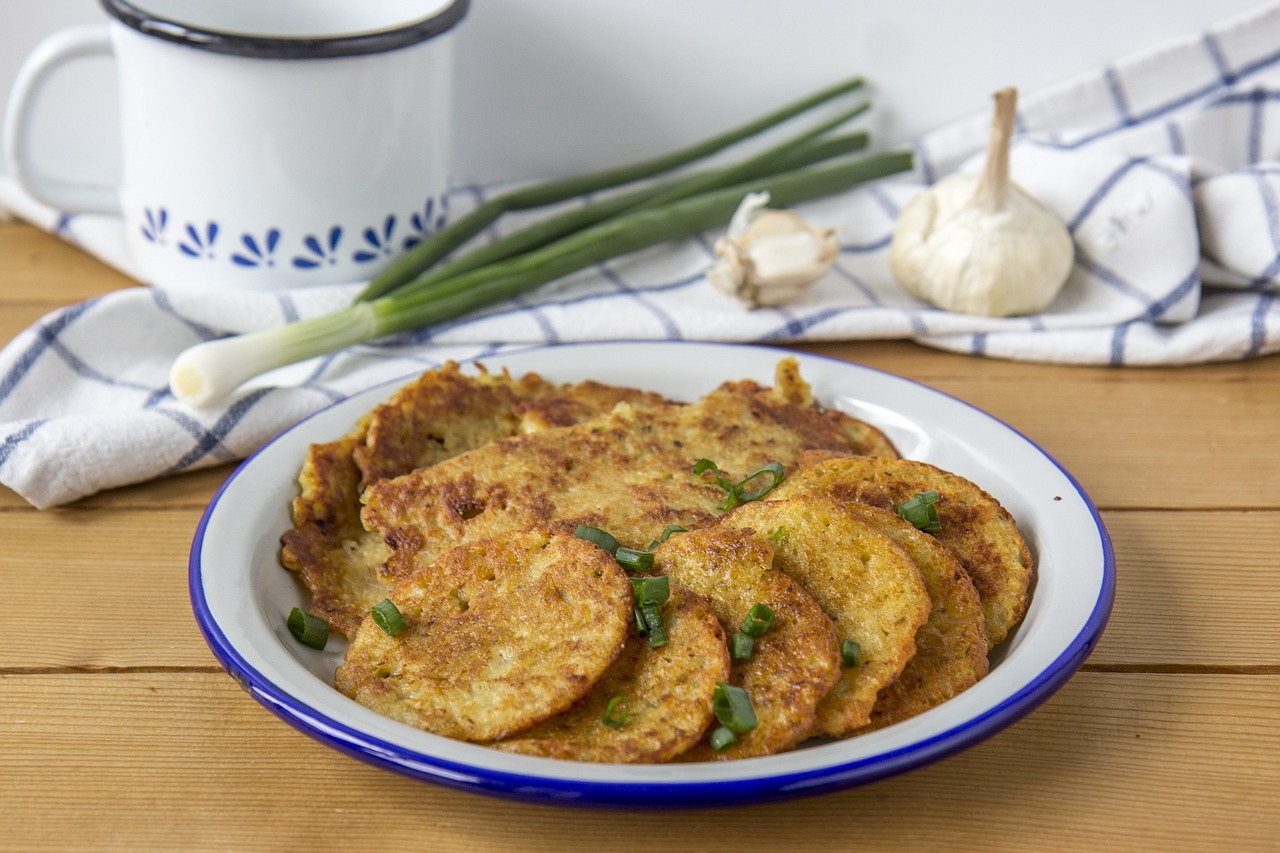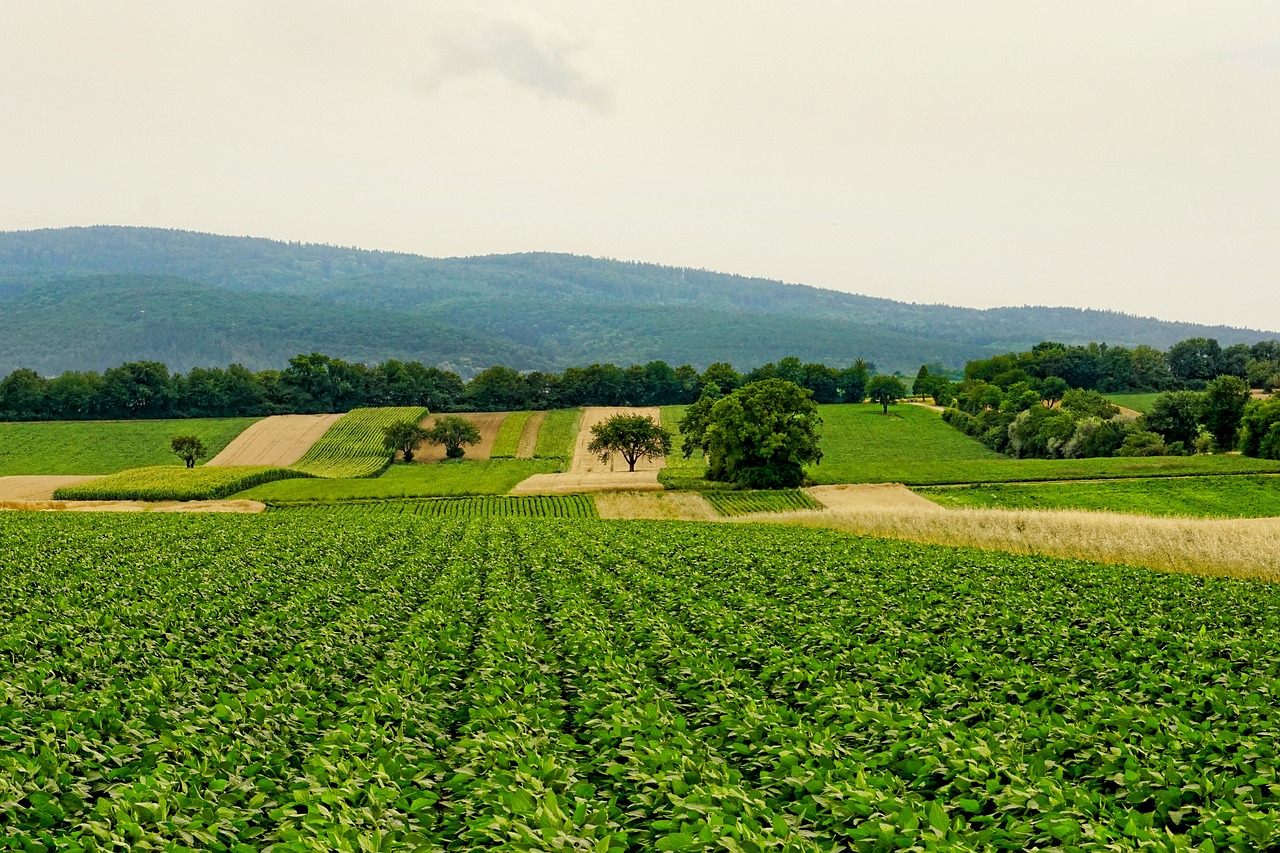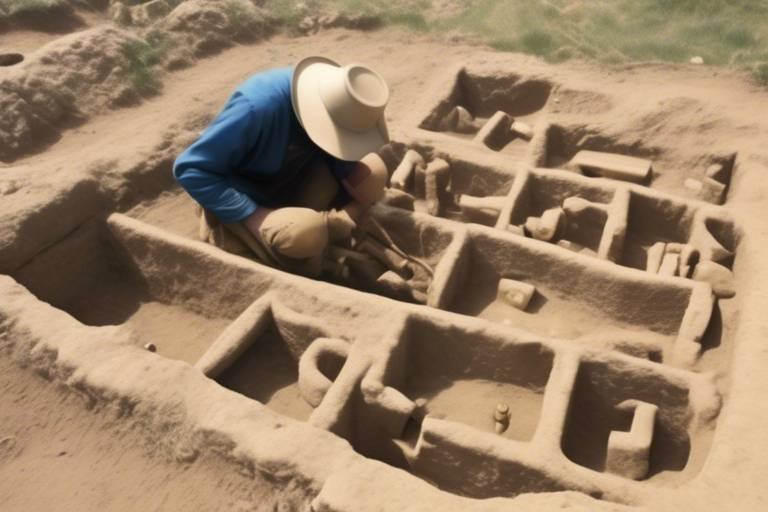The History of Food - Culinary Traditions Through the Ages
Food is not just a necessity for survival; it is a reflection of human history, culture, and innovation. Throughout the ages, culinary traditions have evolved, intertwined, and transformed, creating a rich tapestry of flavors and practices that define our relationship with food. Let's embark on a journey through time to explore the fascinating history of food and how it has shaped societies around the world.

Ancient Culinary Practices
Ancient culinary practices offer a fascinating glimpse into the early food habits of civilizations that laid the groundwork for our modern culinary traditions. In ancient times, food was not merely sustenance but also a reflection of cultural beliefs, social status, and available resources. The diets of ancient civilizations such as the Egyptians, Greeks, and Romans were diverse and influenced by factors like geography, climate, and trade routes.
For the Egyptians, bread and beer were dietary staples, showcasing their advanced agricultural practices and culinary skills. The Greeks celebrated food as an integral part of their social gatherings, with olive oil, wine, and honey playing prominent roles in their cuisine. Meanwhile, the Romans elevated dining to an art form, with elaborate feasts featuring exotic ingredients like peacock and dormouse.
Spices and herbs were prized for their medicinal and flavor-enhancing properties, with trade routes like the Silk Road facilitating the exchange of culinary knowledge and ingredients across vast distances. Cooking methods varied from roasting and boiling to fermenting and pickling, showcasing the creativity and resourcefulness of ancient cooks.
Food also held symbolic significance in religious ceremonies and rituals, with offerings to gods and spirits believed to ensure fertility, prosperity, and protection. The practice of communal dining fostered social bonds and reinforced cultural norms, with feasts and banquets serving as occasions for storytelling, music, and entertainment.
Overall, ancient culinary practices were not just about sustenance but also about identity, creativity, and community, laying the foundation for the rich tapestry of flavors and traditions that we continue to savor and celebrate today.

Medieval Feasting and Fasting
Food is not just sustenance; it is a reflection of culture, history, and innovation. Throughout the ages, culinary practices have evolved, influenced by various factors such as social norms, technological advancements, and global interactions. Let's take a journey through time to explore the rich tapestry of culinary traditions that have shaped our modern food landscape.
In the medieval period, food played a dual role in society, symbolizing both abundance and restraint. Feasting was a common practice during celebrations and feasts, where elaborate dishes and extravagant displays of food were used to showcase wealth and hospitality. On the other hand, fasting was observed during religious periods, symbolizing piety and self-discipline.
Medieval feasting was not just about satisfying hunger; it was a theatrical experience where food was artfully presented, and exotic spices were used to create intricate flavors. Tables laden with roasted meats, spiced wines, and sugary confections were a common sight during grand banquets, signaling power and prestige.
Contrastingly, fasting was a time of spiritual reflection and abstinence, where simple meals devoid of meat and rich ingredients were consumed. Lent, a period of fasting leading up to Easter, was particularly significant in medieval Europe, shaping dietary practices and culinary traditions.
The dichotomy between feasting and fasting in medieval times reflected the social hierarchy and religious beliefs of the era. Feasts were a display of opulence and indulgence, while fasting represented humility and devotion. Both practices played a crucial role in shaping culinary customs and cultural identities during the medieval period.

The Renaissance and Culinary Innovation
The Renaissance period was a time of great cultural and intellectual growth in Europe, and this flourishing extended to the culinary world as well. It was an era of culinary innovation, where chefs and cooks experimented with new ingredients and cooking techniques, paving the way for modern gastronomy.
During the Renaissance, the concept of food as not only sustenance but also as an art form began to take shape. Elaborate feasts were hosted by nobility and royalty, showcasing the culinary skills of chefs who created intricate dishes that delighted both the palate and the eye. The use of spices, previously rare and expensive, became more widespread, adding depth and complexity to dishes.
One of the most significant culinary innovations of the Renaissance was the publication of cookbooks. These books, written by chefs and food enthusiasts, not only documented recipes but also shared culinary techniques and philosophies. This democratization of culinary knowledge helped spread new cooking methods and ideas across regions.
The Renaissance also saw the rise of culinary academies and guilds, where aspiring chefs could learn and hone their craft. These institutions played a crucial role in standardizing cooking practices and elevating the status of chefs in society. The emphasis on precision, presentation, and creativity in cooking became defining characteristics of Renaissance cuisine.
Furthermore, the Renaissance period marked a shift towards a more refined and sophisticated dining experience. Table manners and etiquette became increasingly important, with elaborate dining rituals and protocols being observed during meals. The dining table became a stage for social interaction and display of wealth and status.
In conclusion, the Renaissance was a pivotal period in the history of food, characterized by culinary innovation, creativity, and a newfound appreciation for the art of cooking. The legacy of the Renaissance chefs and their contributions to gastronomy continue to influence modern culinary practices and traditions.

Colonial Influences on Food
Colonial influences on food have played a significant role in shaping the culinary landscape we know today. As explorers and colonizers traveled the globe, they brought back new ingredients, cooking techniques, and flavors that revolutionized local cuisines. The exchange of food cultures between colonizers and indigenous populations led to a fusion of culinary traditions, creating unique dishes that reflect a blend of different influences.
For example, the spice trade during the colonial era introduced exotic spices like cinnamon, nutmeg, and cloves to European kitchens, transforming bland medieval fare into richly flavored dishes. Similarly, the introduction of ingredients such as tomatoes, potatoes, and chili peppers from the New World to Europe had a profound impact on traditional cooking styles, leading to the creation of iconic dishes like Italian pasta with tomato sauce and Spanish paprika-infused dishes.
Colonialism also brought about the spread of agricultural practices, with crops like coffee, tea, and sugar cane being cultivated in new regions for export. This not only changed local economies but also influenced food preferences and consumption patterns worldwide. The colonial legacy can be seen in the diverse culinary traditions of countries like India, Mexico, and Indonesia, where indigenous ingredients are combined with colonial imports to create unique and flavorful dishes.
Furthermore, colonial influences on food extended beyond ingredients and recipes to cooking methods and equipment. The introduction of new utensils, such as the wok in Asian cuisine or the Dutch oven in American cooking, revolutionized the way dishes were prepared and served. These culinary innovations continue to shape the way we cook and eat today, highlighting the enduring impact of colonialism on global food cultures.

Industrial Revolution's Impact on Food
The Industrial Revolution marked a significant turning point in the history of food, revolutionizing the way food was produced, distributed, and consumed. With the advent of mechanization and mass production, traditional agricultural practices gave way to large-scale farming and factory processing.
One of the most profound impacts of the Industrial Revolution on food was the shift towards processed and packaged foods. Canned goods, preserved meats, and other convenience products became more accessible to the masses, changing the way people approached meal preparation and consumption.
Furthermore, the development of transportation networks, such as railways and steamships, enabled food to be transported over long distances more efficiently. This led to the globalization of food markets, with exotic ingredients from distant lands becoming staples in everyday cooking.
The Industrial Revolution also brought about a transformation in urban food culture. As people migrated to cities in search of employment opportunities, urban centers saw the rise of bustling markets, food halls, and restaurants offering a variety of cuisines to cater to diverse tastes.
Additionally, technological advancements in food processing and preservation techniques extended the shelf life of perishable goods, reducing food waste and ensuring a more consistent food supply throughout the year.
In summary, the Industrial Revolution's impact on food was profound, shaping the way we produce, consume, and experience food in the modern world.

World Wars and Rationing
During the tumultuous periods of the World Wars, food became a critical resource that was heavily impacted by the global conflicts. The scarcity of supplies due to wartime demands led to the implementation of rationing systems in many countries, where individuals were allocated limited amounts of essential food items to ensure equitable distribution and support the war effort. Rationing became a common practice to manage food shortages and maintain stability in times of crisis.
People had to adapt to a new way of cooking and eating as traditional ingredients became scarce and expensive. The emphasis shifted towards making the most out of available resources and minimizing waste. Home gardens and backyard livestock became essential for supplementing rationed food supplies, promoting self-sufficiency and resilience in the face of adversity.
Rationing policies varied across different regions, with items like meat, sugar, butter, and coffee being particularly affected. Families had to get creative with their meals, often incorporating substitute ingredients or exploring alternative cooking methods to stretch their rations. The concept of "making do with what you have" became a mantra for many households during this challenging era.
Despite the hardships imposed by rationing, it also fostered a sense of community and solidarity as people shared recipes, cooking tips, and food resources to support each other through difficult times. The cultural significance of food evolved during the World Wars, highlighting the resilience and ingenuity of individuals in adapting to changing circumstances.
As the conflicts came to an end, the legacy of rationing lingered, influencing post-war food habits and shaping future food policies. The experience of scarcity and the need for efficient resource management during wartime rationing left a lasting impact on how societies approached food production, distribution, and consumption in the aftermath of the World Wars.

Globalization and Fusion Cuisine
A journey through time reveals the fascinating evolution of culinary traditions, from ancient practices to modern trends. Let's delve into the rich tapestry of food history and explore how different eras have shaped the way we eat today.
Globalization has revolutionized the culinary landscape, bringing together diverse flavors and cooking techniques from around the world. This fusion of cuisines has created a vibrant and dynamic food culture that celebrates diversity and innovation.
Imagine a world where traditional Italian pasta is infused with spicy Thai flavors, or where Mexican tacos are served with a Japanese twist. Globalization has opened up a world of possibilities, allowing chefs to experiment with ingredients and recipes in exciting new ways.
One of the key drivers of fusion cuisine is the increasing interconnectedness of the world through travel, trade, and technology. As people travel more and experience different cultures, they bring back culinary influences that shape the food scene in their own communities.
Restaurants around the globe now offer fusion dishes that blend elements of various cuisines, creating unique and innovative flavor combinations. This culinary melting pot not only delights the taste buds but also reflects the multicultural nature of our society.
Moreover, globalization has led to the popularity of fusion food trucks, pop-up restaurants, and food festivals that showcase the creativity and diversity of modern cuisine. These culinary events bring people together to savor new taste sensations and celebrate the rich tapestry of global flavors.
Whether it's a Korean BBQ taco, a sushi burrito, or a curry pizza, fusion cuisine continues to push the boundaries of traditional cooking, inviting us to experience food in a whole new light. In a world where borders are increasingly blurred, fusion cuisine serves as a delicious reminder of the power of culinary diversity and innovation.

Modern Food Trends and Sustainability
Modern food trends and sustainability have become pivotal aspects of the culinary world, shaping the way we think about food and its impact on the environment. In today's society, there is a growing emphasis on sustainable practices and ethical sourcing of ingredients. Consumers are increasingly concerned about where their food comes from, how it is produced, and the overall environmental footprint of their meals.
One of the prominent modern food trends is the farm-to-table movement, which promotes the idea of sourcing ingredients locally and directly from producers. This trend not only supports local farmers and businesses but also ensures freshness and quality in the ingredients used in dishes. By shortening the supply chain, the farm-to-table approach reduces carbon emissions associated with long-distance transportation.
Another significant trend in modern food culture is the focus on sustainability in food production. This includes practices such as organic farming, reducing food waste, and using renewable resources in cooking. Sustainable cooking aims to minimize the environmental impact of food preparation while promoting healthy eating habits and conservation of natural resources.
Restaurants and food establishments are increasingly incorporating sustainable practices into their operations, from using recyclable packaging to implementing energy-efficient cooking methods. Consumers are also driving the demand for sustainable dining options, pushing the food industry to adapt and prioritize environmental responsibility.
Moreover, the concept of food sustainability extends beyond environmental concerns to encompass social and economic aspects of food production. It involves supporting fair trade practices, ethical treatment of workers in the food industry, and equitable access to nutritious food for all communities.

Digital Age and Food Culture
The Digital Age has revolutionized the way we interact with food and culinary culture. With the rise of the internet and social media, food enthusiasts have found new avenues to explore and share their passion for cooking and dining. Food blogging has become a popular trend, with individuals sharing recipes, restaurant reviews, and culinary experiences online. The digital age has also democratized access to culinary knowledge, with online recipes and cooking tutorials readily available at our fingertips.
Virtual cooking classes have gained popularity, allowing people to learn new cooking techniques from the comfort of their homes. This digital innovation has made culinary education more accessible and convenient, breaking down barriers to entry for aspiring home cooks. The digital age has transformed the way we engage with food, turning cooking and dining into interactive and communal experiences that transcend physical boundaries.
Online platforms have also facilitated the globalization of food culture, enabling the exchange of culinary traditions and practices from around the world. Food influencers and chefs use social media to showcase diverse cuisines, sparking interest and curiosity among audiences worldwide. The digital age has created a virtual melting pot of flavors and techniques, leading to the emergence of fusion cuisine that blends elements from different culinary traditions.
Furthermore, the digital age has reshaped the way we perceive and consume food. Food delivery apps and online ordering services have made it easier for people to enjoy a wide variety of cuisines from the comfort of their homes. Virtual food communities have sprung up, connecting food enthusiasts and fostering a sense of camaraderie through shared culinary experiences. The digital age has transformed food culture into a dynamic and interactive space where individuals can explore, create, and connect through their love of food.
Frequently Asked Questions
- What are some ancient culinary practices that have influenced modern cooking?
Ancient culinary practices such as fermenting, drying, and smoking have had a significant impact on modern cooking techniques. These methods were used to preserve food and enhance flavors long before the advent of refrigeration.
- How did medieval feasting and fasting shape culinary traditions?
Medieval feasting symbolized abundance and celebration, often associated with grand banquets and elaborate dishes. Conversely, fasting periods, such as Lent, encouraged simplicity and moderation in food consumption, influencing the balance between indulgence and restraint in culinary traditions.
- What role did the Industrial Revolution play in changing food production?
The Industrial Revolution revolutionized food production by introducing machinery for mass production, leading to increased efficiency and lower costs. This era marked the shift from traditional farming methods to mechanized agriculture, transforming the way food was grown, processed, and distributed.
- How has globalization impacted culinary traditions?
Globalization has facilitated the exchange of culinary ideas, ingredients, and cooking techniques across borders, resulting in the fusion of diverse food cultures. This interconnectedness has led to the popularity of fusion cuisine, blending flavors from different regions to create innovative dishes.
- What are some current food trends focused on sustainability?
Modern food trends emphasize sustainability through practices such as farm-to-table dining, which promotes locally sourced ingredients and supports small-scale farmers. Additionally, initiatives like reducing food waste and promoting eco-friendly packaging are gaining traction in the culinary world.



















